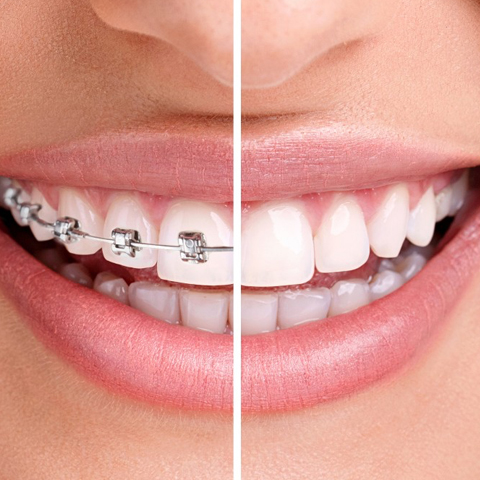- Fener Mah. Bulent Ecevit Blv. No:72 Muratpasa/ANTALYA

Orthodontics, an important branch of dentistry, performs treatments that will ensure correct and functional placement of teeth on the jawbone. It is mostly known for the treatment that enables the teeth to be placed where they should be with the help of braces, which is popularly called wire treatment.
Orthodontic applications can be performed in many different ways. The duration of the treatment, which is determined according to the structure of the teeth and the scope of the treatment, may differ from patient to patient.
Orthodontic treatment, called braces, is performed with brackets fixed to the front or back surface of the tooth and the wires passed between them. The duration and scope of the treatment are determined by the specialist physician according to the patient’s condition.
There are different materials that can be used in braces applications. These are Metal brackets, ceramic brackets and transparent plates.
There are many alternatives for metal brackets. The most prominent of these alternatives are ceramic brackets and lingual brackets.
Ceramic brackets are often preferred because they are almost the same color as the tooth surface. It is widely used for aesthetic purposes, especially in brackets that will be placed on the front of the tooth surface. Ceramic brackets are equivalent to metal brackets in durability and performance. When choosing a bracket, how it will perform is evaluated rather than how it will appear on the tooth surface. However, adult patients generally prefer the use of ceramics on the front teeth that appear while smiling.
Brackets applied to the back surface of the teeth are called lingual brackets. This treatment, which is also known as hidden braces among the people, ensures that the patient gets the treatment he needs without affecting the external appearance. However, in order for this treatment to be applied, the patient’s condition must be appropriate and the doctor should recommend this treatment. In lingual bracket applications, the position of the braces is the back surface of the teeth, and therefore the tongue is much more likely to touch the wires during speech. Therefore, patients may feel discomfort at the beginning of the treatment.
Wireless orthodontic treatments allow the teeth to settle in the right places without applying braces. Methods such as transparent plates allow the treatment to be applied at certain times of the day and the plaque to be removed when desired.
Unlike braces, wireless treatments are not fixed to the tooth surface For this reason, it is very easy to attach and remove. Thanks to these applications that do not disturb visually, it can be prevented from affecting the external appearance of the patients.
Transparent plates, specially designed for each patient, are changed approximately every 15 days from the beginning to the end of the treatment. Each plaque allows the teeth to move at a certain rate and serves as a preparation stage for the plaque to be used after it Although it may vary depending on the patient’s condition, it is recommended that transparent plates be kept attached for around 20 hours a day.
Copyright © 2025 Orion. Tüm Hakları Saklıdır.